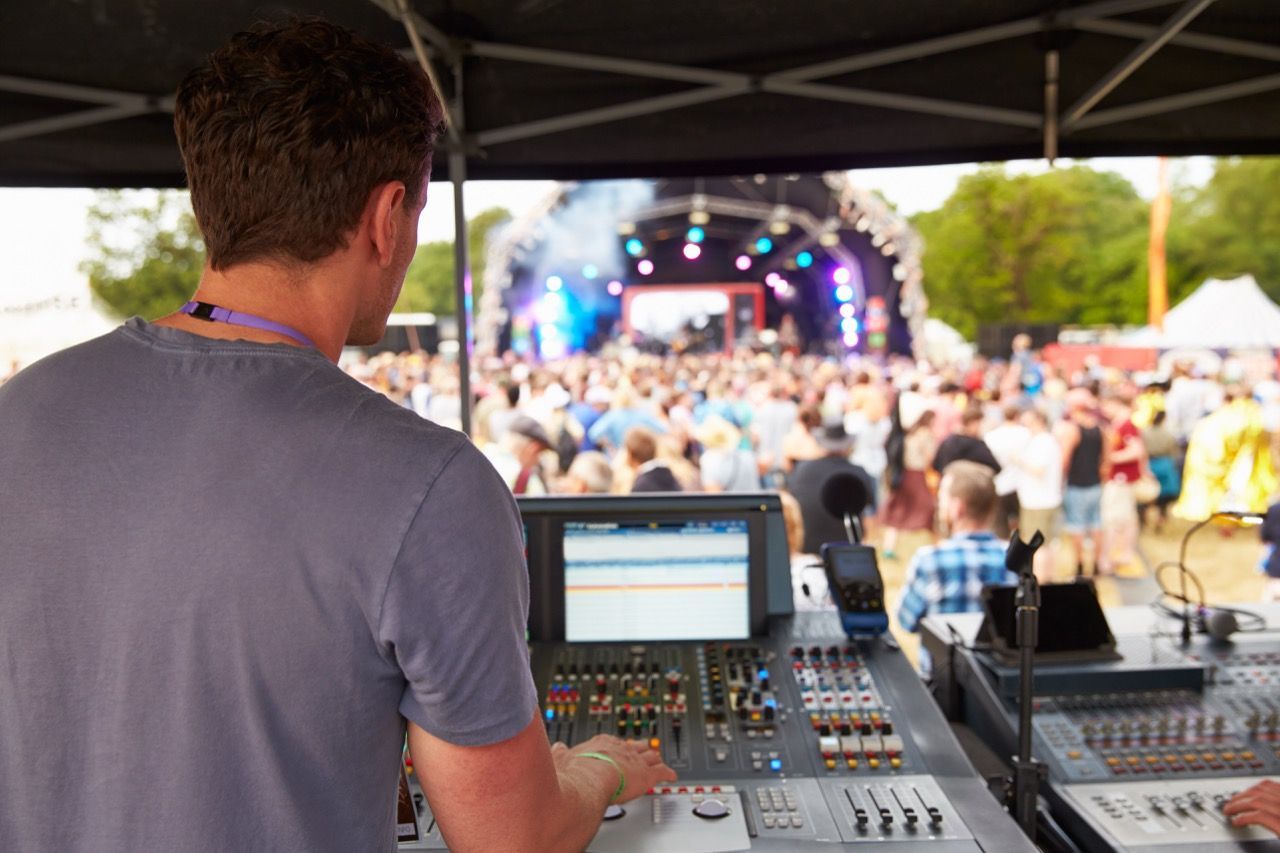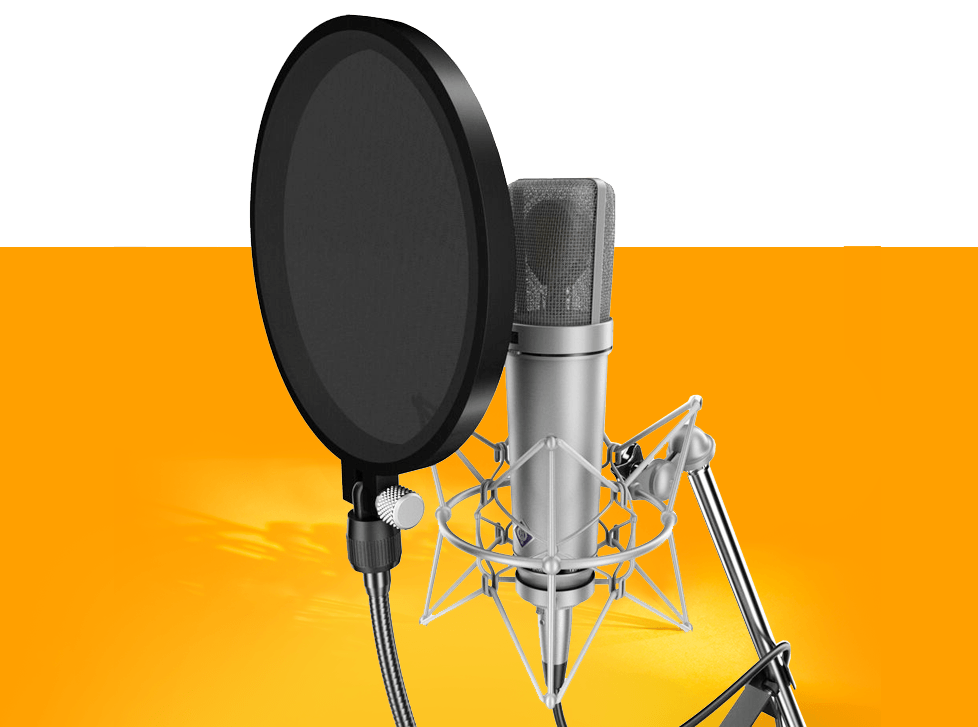Canada’s Live Music Boom: $10B in Opportunities for Audio Professionals
Jeremy Alves | February 4, 2025
Canada’s Live Music Boom!
What It Means for Aspiring Audio Engineers & Music Producers in Canada
If you’ve ever dreamed about working behind the scenes at massive concerts or bringing your favourite band’s sound to life, now might be the best time to dive into live sound engineering courses and music production schools in Canada. According to a groundbreaking report by the Canadian Live Music Association (CMLA), the live music industry in this country hit an impressive milestone: it generated $10.92 billion for the economy in 2023 and supported over 101,640 full-time equivalent jobs. Those numbers aren’t just statistics; they’re flashing lights pointing to a booming industry that’s hungry for new talent—talent that could be you!
The Rising Wave of Live Music
When you picture Canada’s live music scene, big events like Toronto’s bustling festival circuit or Vancouver’s world-class outdoor concerts might spring to mind. Yet the real story is even bigger than that. From local indie shows in small clubs to large-scale festivals pulling in visitors from around the globe, live music in Canada has become a key part of our cultural identity and a serious economic powerhouse.
- Toronto alone generates around $850 million in annual economic impact and provides 10,500 full-time equivalent jobs in the music sector.
- Montreal is celebrated for its jazz scene, but it’s not just jazz these days—electronic, hip-hop, rock, pop, and global music events draw massive crowds.
- Vancouver, with its proximity to L.A. and Seattle, has a steady stream of high-profile tours and festivals that require sound engineering, music production, and every other facet of live audio expertise.
All of this points to one main takeaway: Canada is a live music heavyweight, and it needs the next generation of skilled professionals to sustain its growth. If you’re excited by the thought of joining this thriving landscape, you’re in luck. There has never been a better time to look into sound engineering programs, audio engineering programs, or to enroll in a specialized audio recording course that sets you up for success.
Why These Booming Numbers Matter
The report’s headline figure—$10.92 billion—is a big one, but what does that really mean for you? For starters, the surge in live music is creating an equally robust demand for skilled sound engineers, production specialists, and technicians who know their way around professional-grade equipment. These aren’t just entry-level gigs; they’re roles that can turn into lucrative, long-term careers. And with over 101,640 full-time equivalent jobs supported by the live music sector, that demand isn’t just anecdotal hype. It’s baked into the very fabric of the industry.
Here’s how it breaks down in practical terms:
- Live Sound for Concerts and Festivals: Think of your favourite music festival—dozens of bands and possibly multiple stages, all running simultaneously. Who ensures that each band’s vocals, guitars, drums, or turntables sound just right? That responsibility falls on live sound engineers and technicians. As Canadian music festivals multiply and expand, so do the opportunities in live sound.
- Touring Acts: When a band hits the road, they need their own audio crew to ensure consistent, high-quality sound from city to city. With more acts touring across Canada, especially in major hubs, there’s a constant need for well-trained, flexible audio pros who can handle the technical logistics of life on the road.
- Venue Operations: Bars, clubs, arenas, and even theaters all need skilled audio professionals to handle day-to-day technical operations. It could be a small, intimate jazz club or a massive arena show featuring international pop stars; either way, the demand for professional sound engineering is universal.
- Music Tourism & Hybrid Events: According to the CMLA, music tourism alone generated $9.9 billion in 2023. Events are becoming more sophisticated, often blending in-person concerts with livestreaming or interactive digital elements. If you have the skills to work in both traditional and digital audio environments, you’ll be well ahead of the curve.
- Streaming & Virtual Performances: While live shows remain the bread and butter, many artists and venues have broadened their reach by offering streaming options. Being adept at music and sound production for these hybrid events means you’re trained to handle a fast-evolving space that merges the best of live and virtual.

The Secret Ingredient: Quality Education
Before jumping straight into the industry, it helps to have a solid educational foundation. Music production schools in Canada and specialized audio engineering programs provide more than just a diploma—they give you hands-on experience, mentorship from industry pros, and a network of like-minded peers who might become your future collaborators.
This is where OIART (Ontario Institute of Audio Recording Technology) stands out. Why? Because we focus on both the theoretical side of audio (so you know what’s happening on a technical level) and the practical, real-world application of those skills.
What OIART Offers:
- Hands-On Experience with Professional-Grade Equipment
From large-scale mixing consoles to digital audio workstations (DAWs) that top-tier producers use every day, OIART’s facilities mirror what you’ll find in real-world studios and venues. When you walk into your first professional gig, you won’t be intimidated by the gear—you’ll already be a pro at using it. - Real-World Training in Live Sound
Live events can be unpredictable. Soundchecks run late, equipment malfunctions, and weather can ruin even the best-laid plans. OIART’s approach to live sound engineering courses is designed to mimic these real-world challenges so you learn to adapt and troubleshoot, ensuring you’re prepared for anything the stage throws at you. - Understanding of Both Traditional and Digital Production
Audio work today often requires a hybrid of classic analog techniques and cutting-edge digital technology. You’ll learn how to blend these worlds together effectively, making you an asset in any modern music or audio setting. - Skills in Hybrid Event Production
As the industry transitions toward livestreaming and virtual audience experiences, having a skill set that covers both traditional venue sound and digital content production sets you apart. This dual capacity is increasingly crucial for venues, artists, and event organizers. - Network Connections Within the Industry
Good training is only part of the equation. Building relationships with current industry professionals is what helps you land those first gigs. OIART’s instructors often have extensive networks across North America’s music scene, and they connect students with internships, entry-level positions, or even mentorship opportunities.
Why Now Is the Perfect Time
The Canadian live music industry’s rapid expansion doesn’t happen in a vacuum. It reflects broader trends: increased tourism, cultural exchange, and a national appetite for live experiences that digital streaming services simply can’t replicate. From an economic perspective, more events = more opportunities for emerging audio experts who can handle the demands of a live show.
Additionally, technological innovation has drastically changed the audio landscape. Gone are the days where a single mixing board was all you needed to know. Today’s sound engineering course might cover everything from MIDI controllers and DAWs, to advanced lighting synchronization and immersive audio setups. These are skills that older generations of engineers may not have learned, which means there’s a fresh wave of opportunities for new graduates who are up-to-date on modern tech.
A Day in the Life of a Live Sound Professional
If you’re still unsure, imagine a day on the job as a live sound engineer in Canada’s vibrant music scene:
- 9:00 AM: You arrive at the venue for a big weekend festival. Your team starts by unloading the equipment truck—mixing consoles, microphones, cables, monitors, and other gear.
- 11:00 AM: Soundcheck begins for the first band. You adjust levels, EQ each instrument, and make sure everything sounds balanced. The band’s front person compliments you for capturing the warmth of their acoustic guitars.
- 2:00 PM: You quickly grab lunch while reviewing the next act’s stage plot. They have an elaborate electronic setup, so you double-check their DI boxes and ensure their MIDI controllers sync with the venue’s system.
- 4:00 PM: The crowd starts to arrive. You’re at the front-of-house console, making final tweaks to ensure crisp vocals and punchy bass in the large, open-air setting.
- 6:00 PM – 10:00 PM: Multiple sets roll on and off the stage. Each band has its own preferences, from reverb settings to microphone choices, and you handle these changes seamlessly. By the time the headliner goes on, you’re in the zone, anticipating requests before the artist even speaks into the mic.
- Midnight: The concert wraps up to roaring applause. You power down equipment, talk shop with the lighting tech, and chat with the headliner’s tour manager about future gigs. Everyone’s thrilled, and your job satisfaction is through the roof.
This energetic, varied routine is far from a boring 9-to-5 job. It’s more like a front-row seat to music history in the making—and you’re the one making it sound amazing.
Adapting to a Changing Industry
One key trend is the rise of hybrid events—shows that feature both a live audience and a livestream or virtual component. This expansion means you’re not just mixing for in-person crowds but also perfecting the audio feed for online viewers. The skill set here involves understanding digital broadcasting, latency issues, and streaming software. If you have a background in audio recording courses and music producer programs, you’ll be uniquely positioned to handle these multi-platform shows.
Over time, we may also see augmented and virtual reality experiences entering the live music space. Imagine fans at home being able to attend a concert via VR headsets. That opens up a whole new realm for audio professionals to design immersive soundscapes. As a new engineer or producer, staying current with these trends can set you up for cutting-edge, exciting roles that didn’t exist just a few years ago.
Why Parents Should Encourage a Career in Audio
If you’re a parent reading this, you might be wondering if an audio career can offer long-term stability for your teenager. The short answer is yes. While the music industry can be notoriously competitive, the live events sector provides a broad range of stable, in-demand technical jobs. Festivals, tours, corporate gigs, and cultural events all need skilled audio professionals—and Canadians are increasingly spending their discretionary income on experiences rather than goods. That means the “experience economy,” including live music, is likely here to stay.
Furthermore, the technical expertise gained from a sound engineering course or a music engineering course can be applied to a wide variety of roles beyond concerts. Video game audio, film and television post-production, podcasting, and event production all require similar skill sets. A comprehensive audio education at an institution like OIART lays a foundation that can carry your child through diverse audio-related career paths.
Making It All Happen at OIART
So, you’re convinced there’s a future in Canada’s booming live music sector, but how do you get there? As mentioned, schools with audio engineering programs can accelerate your journey. At OIART, we combine small class sizes, direct mentorship, and practical experiences that put you at the center of real projects, not just classroom simulations. The aim is simple: Empower you with the expertise and confidence to thrive in an industry that’s on an unstoppable upswing.
Our alumni have gone on to do everything from front-of-house mixing for major tours to producing tracks for local artists who eventually break onto the international stage. Because we keep our cohorts intimate, you get more one-on-one time with instructors, more access to equipment, and more opportunities to hone your craft without the pressure of competing for studio hours.
Your Future in Numbers
- $10.92 billion in economic activity: This translates to countless events, concerts, and festivals nationwide.
- 101,640+ full-time equivalent jobs: You’re entering a field where the demand for audio experts is tangible and continually growing.
- $9.9 billion from music tourism: Tourists are flocking to Canadian music events in droves, boosting the industry and creating even more job openings.
- 80% of recording industry expenditure in the Toronto region alone: There’s a concentrated market that’s ripe for new talent, especially if you graduate from a top-tier program that readies you for the hustle and bustle of big city gigs.
Ready to Launch Your Audio Career?
Canada’s live music industry is booming, and it needs your skills—whether you see yourself becoming the go-to engineer for stadium tours or the unsung hero of local club gigs. If you’re passionate about music and technology, if you love the idea of helping bands sound their best, and if you’re excited by the prospect of working in a fast-paced, collaborative environment, then it’s time to turn that passion into a real, thriving career.
Looking for the perfect place to start? OIART offers personalized, hands-on training that can make you stand out in a crowded field. With our comprehensive curriculum, state-of-the-art equipment, and close industry ties, we’ll help you evolve alongside the live music industry—ensuring you’re always ready for the next big show.
Your Next Steps
Ready to dive headfirst into Canada’s booming live music scene? There’s never been a better moment to make your move:
- Explore Our Program: Check out OIART’s Audio Engineering Program to see how our curriculum aligns with your career goals.
- Request Info: Contact our admissions team to learn more about class sizes, hands-on projects, and industry networking opportunities.
- Apply Today: Secure your spot in our exclusive classes and get ready to step into a world of live sound, music production, and boundless creative possibilities. Get Started!
Be part of the next wave of audio innovation—and help shape Canada’s live music narrative while you’re at it. We can’t wait to see what you’ll create.
Ready to Start?
OIART's Audio Program Includes:
✓ Small Class Sizes
✓ On Site Facilities
✓ Industry Leading Instructors
✓ Post Grad Support & Guidance
✓ Exclusive 11 Month Program
Top Reasons Why You Should Choose OIART.
Have Questions?
If you have questions about our audio engineering and music production program or would like to book a tour, we would be pleased to speak with you.
Text Us: 519.200.4151
Share This With a Fellow Music Lover
Apply in 4 Steps!
Step 1: Click apply now.
Step 2: Answer 8 questions about yourself.
Step 3: Upload supporting documents.
Step 4: That's it! You are done.
Share this with fellow music lovers


